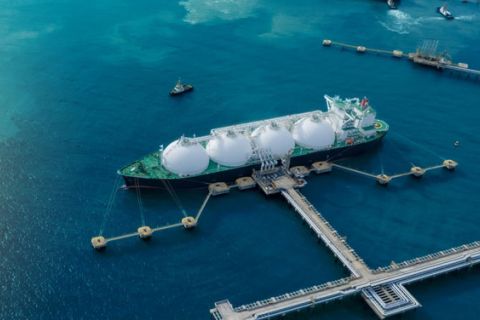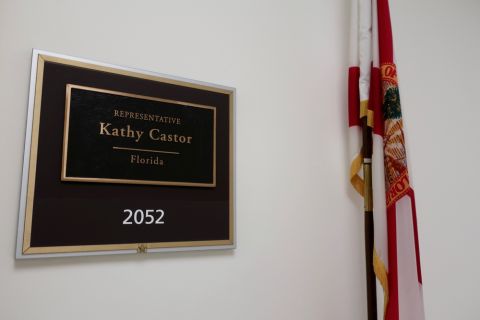As with any industry, a new crop of favorable circumstances can lead to growth, even in a depressed economy. Such is the current milieu for the energy industry.
Admittedly, oil is a scarce resource in the U.S., despite new unconventional oil plays. Some of those plays are economic at today's oil price while others seem marginal. Yet, simultaneously, the nation has gained a wealth of natural gas reserves. But, as victims of their own success, gas producers have seen prices fall and remain low, moving toward the point of investor skepticism.
What to do? Increase demand. New sources of demand for natural gas encourages higher natural gas prices, which drive production activity, which pulls in more midstream construction and operation business, which is good for the energy industry, job creation, and the environment. Fortunately, those are the set of circumstances in which the industry finds itself.
For example, many new uses have been suggested to increase natural gas consumption in the U.S. Major oil companies such as Encana Corp. and Chesapeake Energy Corp. are converting their fleet vehicles to compressed natural gas (CNG). (See Building Gas Demand in this issue.) If new infrastructure can be built to accommodate the potential wave of CNG vehicles, demand from that sector could increase 10 times the current level, to consume some 1 billion cubic feet per day or more.
Also, Encana, among others, plans to convert its drill rigs from diesel to natural gas, and encourage its service and supply vendors to move toward liquefied natural gas fuel for their big-rig trucks.
Meanwhile, another major market for natural gas is just over the horizon— coal displacement. Despite the coal lobbies best efforts, electrical-power generators are turning to gas as a cheaper and cleaner fuel source, either by choice or driven by new U.S. Environmental Protection Agency (EPA) regulations.
First, including transportation costs and plant efficiencies, spot coal prices are now trading at 50 cents higher per million Btu than gas. Due to the availability of all this new cheap gas, coal-fired power plants have been steadily losing market share to their gas-fired brethren. In the 1990s, coal fed 56% of U.S. power plants. As of last year, that has fallen to 45%.
Second, nine major new EPA regulations that would affect coal plants are under development. If enacted, all the rules would be effective by 2016. Two of these, the Power Plant Mercury and Air Toxics Standards (with an $11 billion per year compliance price tag) and the Cross-State Air Pollution Rule (to cost some $2.4 billion per year for compliance), are likely to be quite onerous. According to a study by BNP Paribas, by the end of 2016, about 44% of the coal-fired power plants not currently in compliance must either install costly new equipment or cease to exist.
Also, on July 6, 2011, the EPA finalized a new rule that requires power plants in 28 states to reduce emissions and particulates, beginning on January 1, 2012. Interestingly, a group of states set to be favored by the Marcellus shale natural gas play in the northeast are among those states most lacking in proper sulfur dioxide (SO2) emission controls.
Those states include Michigan (with 83% of its coal-fired power generation plants lacking sufficient SO2 emission controls), Illinios (79%), New York (60%), Ohio (40%), and Pennsylvania (28%). Looking south toward the Eagle Ford play, about 41% of Texas plants lack sufficient controls.
Recommended Reading
US NatGas Futures Hit Over 2-week Low on Lower Demand View
2024-04-15 - U.S. natural gas futures fell about 2% to a more than two-week low on April 15, weighed down by lower demand forecasts for this week than previously expected.
US Natgas Prices Hit 5-week High on Rising Feedgas to Freeport LNG, Output Drop
2024-04-10 - U.S. natural gas futures climbed to a five-week high on April 10 on an increase in feedgas to the Freeport LNG export plant and a drop in output as pipeline maintenance trapped gas in Texas.
CERAWeek: Two Minutes with EQT’s Toby Rice on Energy Security
2024-03-22 - EQT Corp. President and CEO Toby Z. Rice spoke to Hart Energy on March 20 on the sidelines of CERAWeek by S&P Global to discuss natural gas infrastructure bottlenecks, energy security and the company’s advances on LNG.
Antero Poised to Benefit from Second Wave of LNG
2024-02-20 - Despite the U.S. Department of Energy’s recent pause on LNG export permits, Antero foresees LNG market growth for the rest of the decade—and plans to deliver.
Commentary: Fact-checking an LNG Denier
2024-03-10 - Tampa, Florida, U.S. Rep. Kathy Castor blamed domestic natural gas producers for her constituents’ higher electricity bills in 2023. Here’s the truth, according to Hart Energy's Nissa Darbonne.



